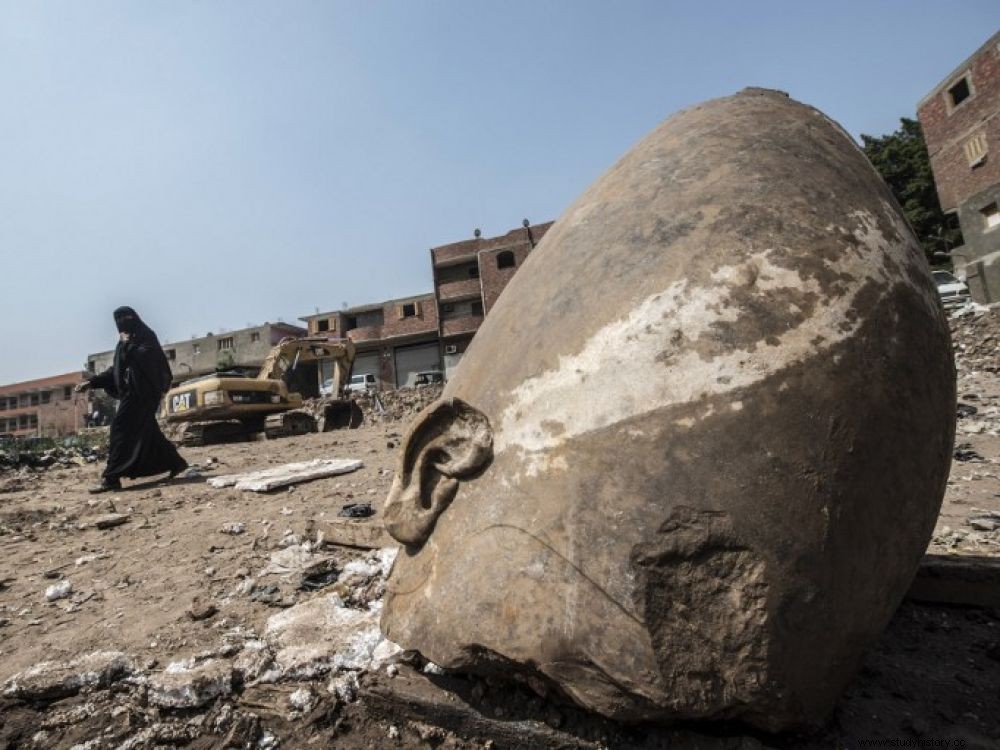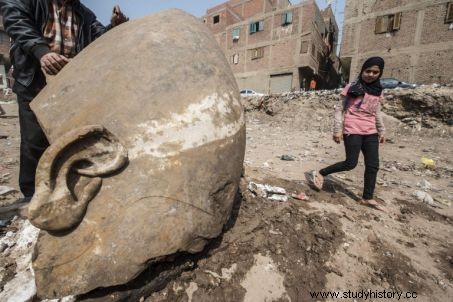Remains of statues said to be those of 19th dynasty pharaohs have been discovered in a pit near the temple of Ramses II, in the suburbs of Cairo.

Remains of statues presented as those of pharaohs discovered by a team of Egyptian and German archaeologists in Matareya, on March 9, 2017, in the suburbs of Cairo.
The discovery was made by a team of Egyptian and German archaeologists in a wasteland in Matareya, a popular suburb northeast of Cairo built on the ancient site of the solar temple of Heliopolis. According to Ayman Ashmawy, the head of the team of Egyptian archaeologists, some of the remains discovered are those of an eight-meter-long statue, carved from quartz and which "probably represents" King Ramses II who ruled Egypt over 3000 years ago (1279 to 1213 BC). "This statue is not engraved and therefore cannot be identified, but the fact that it is at the entrance to the temple of King Ramses II would mean that it could belong to him" , explains the Egyptian Ministry of Antiquities in a press release.
Excavations must continue in Cairo

Among the remains of the other statue is an 80cm bust of King Seti II who reigned over Egypt for ten years (from -1203 to -1194). He was carved out of limestone rock with a fine-featured face, according to the statement. In this text, Mr. Ashmawy describes the findings as "very important" because "they show that the site of the solar temple was gigantic with magnificent structures, prestigious inscriptions, colossi and obelisks" . According to the statement, the site of Heliopolis was damaged in Greco-Roman times when most of its obelisks and colossi were transported to Alexandria or Europe. At the time of the Muslim conquest, its stones were also used to build Cairo. The leader of the German team, Dietrich Raue, explained that the mission was working to move the statues to the nearby archaeological site of Matareya for restoration. Excavations will continue, the statement said.
